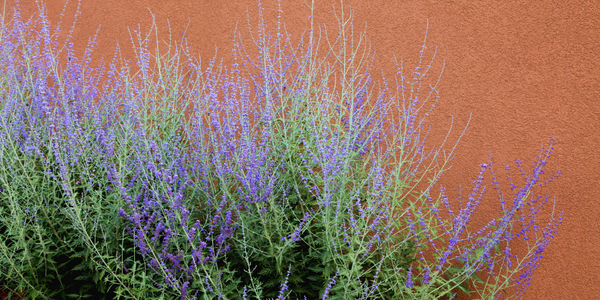Does your Russian sage look woody and lifeless after a long winter? If you’re new to growing this shrub, you might be shocked in the spring to only notice long, woody stems that don’t seem to have any new leaves growing. Is your Russian sage dead, or is there something you can do to help revive it?
Russian sage plants are considered shrubby perennials, which means new growth occurs from both the stems and the crown of the plant. In especially brutal winters, the above-ground stems may be completely killed, but don’t worry: new growth will still emerge from the crown of the plant. However, if no new growth appears at the base of the plant by the middle of the summer, the plant is probably dead.
Keep reading to learn more about why your Russian sage looks dead and how you can help it thrive.
Is My Russian Sage Dead?
Noticing a dead-looking Russian sage in the spring can be quite worrisome. But odds are, your Russian sage is alive and well.
As the growing season progresses, Russian sage branches become woody and thick. Over the winter, many of these branches will die off, but new growth will appear at the base of the plant. Some new growth may occur on the existing branches as well, but it will be thin and uneven.
This process is common for shrubby perennials like Russian sage and chrysanthemums. However, if you don’t notice any new growth near the bottom of the plant by the middle of the growing season, your Russian sage unfortunately may have died at some point.
Russian sage can survive in USDA zones 4-9. If temperatures drop below -25 degrees Fahrenheit where you live, your Russian sage may not be able to make it through the winter.
How Do I Keep My Russian Sage From Looking Dead?
If you’ve examined your Russian sage plant in the spring and it has new growth appearing near the base, you can rest easy knowing it’s alive and well. However, the dead branches of the Russian sage don’t go away and will cause an unpleasant appearance.
Thankfully, there’s a simple way to keep your Russian sage looking healthy and happy: prune it regularly. The best time to do this is in late winter or early spring. This late pruning will cause the Russian sage to focus all its energy on growing new branches.
Don’t be afraid to heavily prune your Russian sage. You can trim it all the way down to about 18 inches tall. This will create the beautiful, shrubby look that makes Russian sage so popular.
Final Thoughts
Because of their unique growth pattern, it’s easy to think your Russian sage has died over the winter. However, you probably just need to trim the plant to encourage it to grow new branches. Pruning your Russian sage each spring is a great way to promote new growth while eliminating last season’s dead branches.



